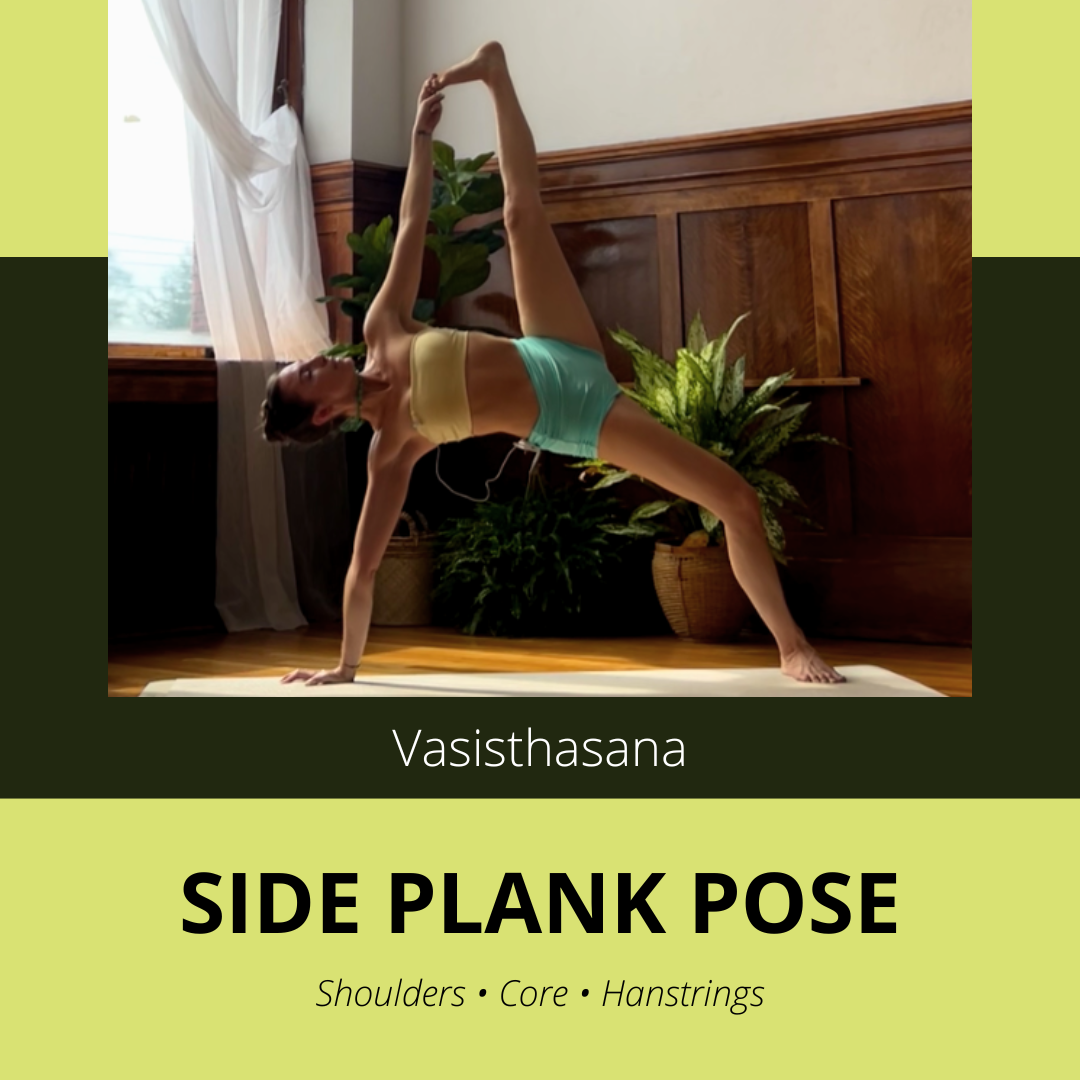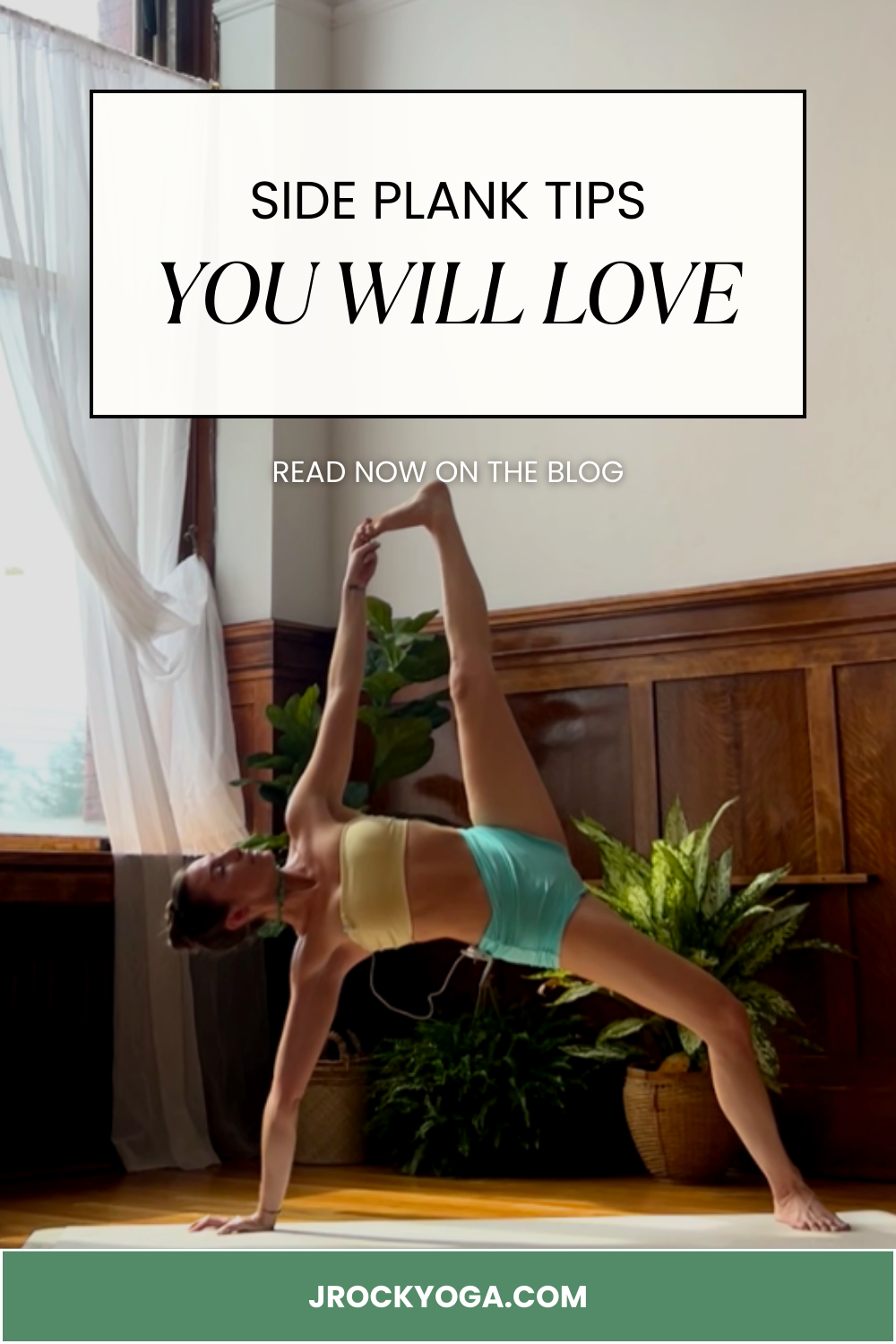Side Plank (Vasisthasana): Core Power Move + Tips to Nail It
Side Plank Pose, one of the usual suspects in our vinyasa practice is a powerhouse for core strength, shoulder stability, and full-body awareness. Side plank teaches you to hold your center no matter what’s going on around you — which, honestly, feels like a metaphor for life. I’m always looking for my center, and something about side plank feels grounded and yet free at the same time.
While crunches might get all the glory in the world of ab workouts, side plank in yoga builds strength that’s functional, sustainable, and gentle on your spine. Whether you're working toward a strong core, balance, handstands, Pincha Mayurasana, or just want to feel stronger in your flow, this pose delivers.
In this post, I’ll break down how to do side plank with proper alignment, the most common mistakes, and how this one pose can seriously level up your yoga practice!
1. What is Side Plank (Vasisthasana)?
Side Plank, or Vasisthasana in Sanskrit, is a strength building yoga pose that targets your obliques, strengthens the shoulders, and demands total-body stability + even a bit of flexibility for the full variation. Named after the great sage Vasishtha, this posture challenges your balance while activating the deep muscles that support your spine, ribs, and hips — making it one of yoga’s most efficient strengthening poses.
Unlike traditional crunches that isolate the abs, Side Plank integrates your body as a whole: from your fingertips to your toes, everything has a role to play. And the best part? It can be modified or leveled up depending on where you are in your practice. You know me, spice it up or dial it down, I’m all about choosing your own adventure!
2. Why Side Plank can be Better Than Crunches for Core & Back Support
Crunches have their place, but they aren’t always suitable for everyone — and can sometimes aggravate your neck or lower back when overdone or misaligned (More no crunch ab exercises here). Side Plank, on the other hand, taps into functional core strength — the kind you use in real life: stabilizing your spine, supporting your posture, and moving with ease and grace. Vasisthasana trains strength and control across multiple planes of movement. Especially strengthening your obliques, transverse abdominis, and glute medius — essential muscles for posture, spinal integrity, and balancing on one foot (or one arm!).
Bonus? Side plank teaches shoulder stabilization — key for anyone working toward arm balances or inversions.
3. Step-by-Step Alignment Guide
Want to nail your Side Plank safely and effectively? Follow this step-by-step guidance:
Start in Plank Pose (Phalakasana).
Walk your hands a little forward so there is a diagonal line between your shoulder and wrist (this helps take pressure off of your wrists). Shift your weight onto your right hand and roll onto the outer edge of your right foot.Stack your feet (or stagger them for more stability), and lift your left arm to the sky.
Engage your core.
Draw your lower ribs into you, allowing your core to brace and stabilize.Press down through the right hand and grip with your fingertips.
Create space between your shoulder and ear, activating your serratus anterior for stability.Flex the feet and firm the thighs.
Squeeze your inner thighs together lifting your hips.Extend your top leg.
Take your left peace fingers (first + middle) and grab onto your left big toe. Extend your left leg up to the sky. If you can;t grab your toe, grab your shin. If you feel wobbly, shorten the stance between your bottom foot and bottom hand and try to ground your whole bottom foot on the ground, standing on that foot to stabilize.
Hold for 3–5 breaths, then return to plank and repeat on the other side.
4. Common Mistakes & How to Fix Them
Let’s clean up some common side plank habits to help you get stronger, safer, and more stable:
❌ Sagging hips → ✅ Fix it: Press into your bottom hand and lift through your obliques. Resist sinking into the ground.
❌ Collapsed shoulder → ✅ Fix it: Grip into your bottom fingers, press the ground away and rotate your elbow back (feel your latissimus dorsi muscle wrap under your armpit and around your ribcage when you do this).
❌ Lack of engagement in feet or legs → ✅ Fix it: Flex both feet and press the outer edge of the lower foot firmly into the mat. Hug the inner thighs toward each other to create lift.
6. How Side Plank Preps You for Inversions
You might not think of Side Plank as an inversion prep pose, but it’s actually one of the best places to build shoulder strength, balance, and core awareness for handstands, forearm stands, and more.
It strengthens your obliques and transverse abdominis — both key players in creating stability upside down.
It teaches shoulder protraction and scapular control, just like you need in handstand or Pincha Mayurasana.
It builds confidence in asymmetrical weight-bearing, a must for entry transitions into arm balances or one-legged inversions.
Side Plank is truly your quiet powerhouse — a prep pose that we practice often but don’t realize how it can completely transform your control and lift.
8. Want to Go Deeper? Let’s Build Strength Together
If you're feeling inspired to level up your core strength and inversion skills, I’ve got you covered.
Inside The Recipe, my all-access online yoga studio, you’ll find a full library of classes and programs designed to support your journey — whether you're just getting started or prepping for handstand.
✨ Try These Next Inside The Recipe:
Foundational Strength Program – a step-by-step series to help you build functional strength, stability, and confidence on the mat
30-Day Handstand Program – progress from wrist prep and core drills to full handstand entries and holds
Quick Core Classes – short, effective sessions that weave in Side Plank and other stabilizing shapes
With 100+ on-demand hours of classes, guided programs, and supportive practices for your body and nervous system, The Recipe is here to help you grow your practice — one breath, one pose at a time.
👉 [Join The Recipe] today and start building your strongest, most connected self yet.
Good luck with your side plank!
xx
Jess
Your recipe for strength, flexibility, breath + inner connection. Get anytime access to our growing collection of over 100 classes, ALL programs, and exclusive content. Yoga, meditation, strength + more.
Love this post? Pin it for later!




